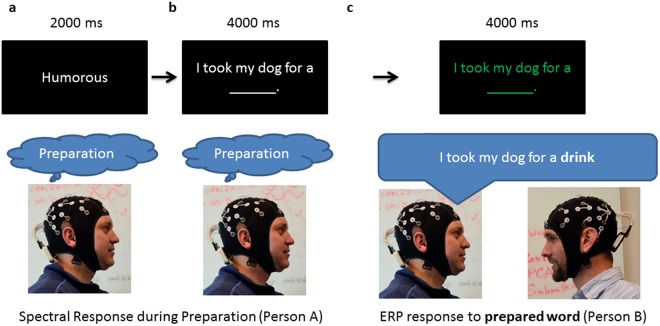Figure 1.
Task Design. The speaker (person A) is instructed to fill in a sentence with a humorous (i.e. unexpected) ending (a) (2000 ms), followed by a sentence with an open ending (b) (e.g. “I took my dog for a ____” (4000 ms). The speaker is prompted to read the sentence aloud to the listener when it turns green (c), including the unexpected ending (e.g. “I took my dog for a party”). As denoted underneath the pictures of the participants, the spectral responses of the listener during initial preparation (a) are compared with the ERP response to the unexpected word within the listener (c). The “humorous” prompt in (a) is replaced by the word “serious” during the “expected” condition, when the speaker prepares the expected ending of the sentence (i.e. “I took my dog for a walk”).

